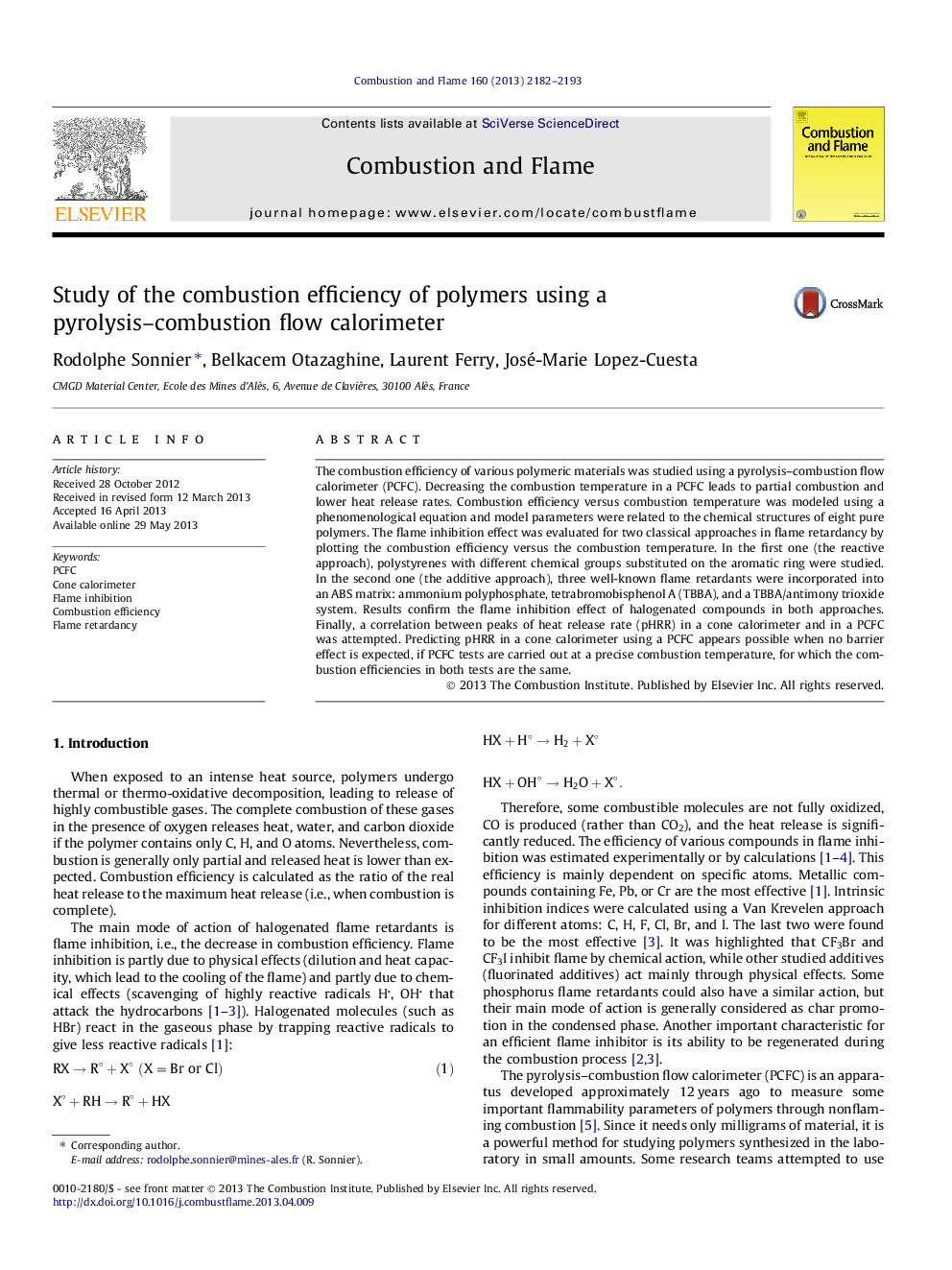| Article ID | Journal | Published Year | Pages | File Type |
|---|---|---|---|---|
| 10264818 | Combustion and Flame | 2013 | 12 Pages |
Abstract
The combustion efficiency of various polymeric materials was studied using a pyrolysis-combustion flow calorimeter (PCFC). Decreasing the combustion temperature in a PCFC leads to partial combustion and lower heat release rates. Combustion efficiency versus combustion temperature was modeled using a phenomenological equation and model parameters were related to the chemical structures of eight pure polymers. The flame inhibition effect was evaluated for two classical approaches in flame retardancy by plotting the combustion efficiency versus the combustion temperature. In the first one (the reactive approach), polystyrenes with different chemical groups substituted on the aromatic ring were studied. In the second one (the additive approach), three well-known flame retardants were incorporated into an ABS matrix: ammonium polyphosphate, tetrabromobisphenol A (TBBA), and a TBBA/antimony trioxide system. Results confirm the flame inhibition effect of halogenated compounds in both approaches. Finally, a correlation between peaks of heat release rate (pHRR) in a cone calorimeter and in a PCFC was attempted. Predicting pHRR in a cone calorimeter using a PCFC appears possible when no barrier effect is expected, if PCFC tests are carried out at a precise combustion temperature, for which the combustion efficiencies in both tests are the same.
Related Topics
Physical Sciences and Engineering
Chemical Engineering
Chemical Engineering (General)
Authors
Rodolphe Sonnier, Belkacem Otazaghine, Laurent Ferry, José-Marie Lopez-Cuesta,
